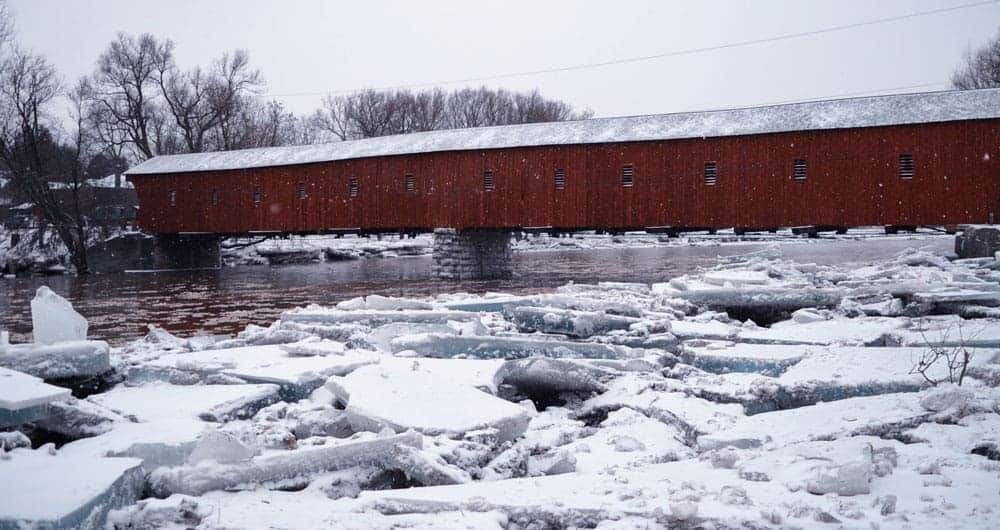Thick sections of ice were seen washed up along the banks of Grand River last week in places like West Montrose and Conestogo after an unusual thaw in the weather caused minor ice jams and elevated river flows. Melting ice and rainfall contributed to flooding of low-lying areas – areas typically flooded in the springtime – such as the low-level bridge along Three Bridges Road upstream from St. Jacobs.
About a month of cold weather preceded last week’s sudden warming, which caused the sudden breakage of ice along the Grand River, says a spokesperson for the Grand River Conservation Authority.
“The river, essentially from source to mouth, really was a sheet of ice, and pretty thick ice in some parts, too, prior to this event happening,” noted Cam Linwood.
“As the event started and those temperatures warmed, it started contributing to snowmelt and started contributing to some of the rainfall runoff into the river.”
The additional water levels increased river flows, which in turn became backed up by thick ice in the river until finally the river flows spiked around midday on Friday in West Montrose.
“That’s when the temperature was warm enough that ice started breaking up,” said Linwood, causing the ice jams in West Montrose.
“So essentially it’s too much broken ice in the river that gets kind of stuck for a short period of time, water will back-up behind it, and then obviously that water pressure puts more on the ice, it releases the ice jam and everything goes downstream,” he explained.

In the space of an hour, it was over, and by late afternoon the flow and water levels had receded, leaving only miniature icebergs piled along the riverbanks.
“When we’re talking in the context of ice jams, this is a relatively small one in comparison to some that you’ll see quite often farther downstream, and even some that they’ve seen in West Montrose before,” noted Linwood.
The Shand Dam on Belwood Lake was able to absorb some of the higher river flow to minimize flooding during the ice jam. Now that the event is over, the reservoir is slowly releasing the excess water back into the river, which will contribute to higher than normal river flows until the dam is returned to its regular wintertime operating level.
The likelihood of flooding in the area is receding, though the GRCA is still monitoring the river for ice jams, which can suddenly and unpredictably raise water levels.









